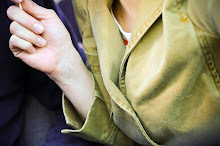
I recently was given the opportunity to design a logo for a Colorado University's conservation and reduction program in their residence halls. The program, named 'Eco Star Challenge', is geared to create awareness among students in regards to their "behaviors associated with excessive consumption" and really, to get back to the basics by reuniting them with the good ol' phrase Reduce, Reuse, Recycle. The logo design went up on bulletin boards across campus' in the residence halls and was also used for t-shirts!

I was thrilled when Heather called upon me for one, the opportunity and two, it's something I'm really passionate about. Design, yes...absolutely. But I'm referring to the environmental issues.

I have this book. And here's a little secret, if I read too much of it's 'totally in your face facts' at one time, it'll keep me up all night thinking about what it is I haven't been doing to help this beautiful world you and I live in. A little goes a long way, in both reading the book and putting it's knowledge into action.
So if you pick it up, and I hope you will, consider this your forewarning.
Here's some text from a few well known concepts:
Recycle.
If everyone in America simply separated the paper, plastic, glass, and aluminum products from the trash and tossed them into a recycling bin, we could decrease the amount of waste sent to landfills by 75 percent. Currently, it takes an area the size of Pennsylvania to dump all our waste each year.
Here's some text from a few well known concepts:
Recycle.
If everyone in America simply separated the paper, plastic, glass, and aluminum products from the trash and tossed them into a recycling bin, we could decrease the amount of waste sent to landfills by 75 percent. Currently, it takes an area the size of Pennsylvania to dump all our waste each year.
Water Filters
If you want to be sure the tap water in your house is clean, try installing water filters on your faucets instead of buying bottled water-you'll save money over time and get better-tasting water. You can buy a water filter for as little as $29, or about a month's worth of bottled water (if you drink a liter a day). About 1.5 million tons of plastic are used in the bottling of 89 billion liters of drinking water each year. That's enough plastic to make two water filters for every household on the planet. One billion people around the world lack access to clean drinking water.
Lighting
Install more efficient lighting systems, such as those with motion sensors and dimmable lighting controls. And, of course, go fluorescent. You can save $35 annually if you replace just four standard incandescent lamps with compact fluorescent lamps, which use 66% less energy. If every American home replaced just one light bulb with a more energy-efficient one, we would save enough energy to light more than 2.5 million homes for a year and prevent greenhouse gases equivalent to the emissions of nearly eight hundred thousand cars.
Set your thermostat a degree higher for air-conditioning and a degree lower for heating, and you could save $100 per year on your utility bill. Keep adjusting and you'll save even more. If every home in America turned the dial, we could save more than $10 billion per year on energy costs, enough to provide a year's worth of gasoline, electricity, and natural gas to every person in Iowa.
Quote provided by Lynne Harrahy in the "Zero Waste" article by Emily Zarka.
Environmental facts provided by 'The Green Book' by Elizabeth Rogers and Thomas M. Kostigen
Thanks Heather!
Lighting
Install more efficient lighting systems, such as those with motion sensors and dimmable lighting controls. And, of course, go fluorescent. You can save $35 annually if you replace just four standard incandescent lamps with compact fluorescent lamps, which use 66% less energy. If every American home replaced just one light bulb with a more energy-efficient one, we would save enough energy to light more than 2.5 million homes for a year and prevent greenhouse gases equivalent to the emissions of nearly eight hundred thousand cars.
Set your thermostat a degree higher for air-conditioning and a degree lower for heating, and you could save $100 per year on your utility bill. Keep adjusting and you'll save even more. If every home in America turned the dial, we could save more than $10 billion per year on energy costs, enough to provide a year's worth of gasoline, electricity, and natural gas to every person in Iowa.
Quote provided by Lynne Harrahy in the "Zero Waste" article by Emily Zarka.
Environmental facts provided by 'The Green Book' by Elizabeth Rogers and Thomas M. Kostigen
Thanks Heather!

